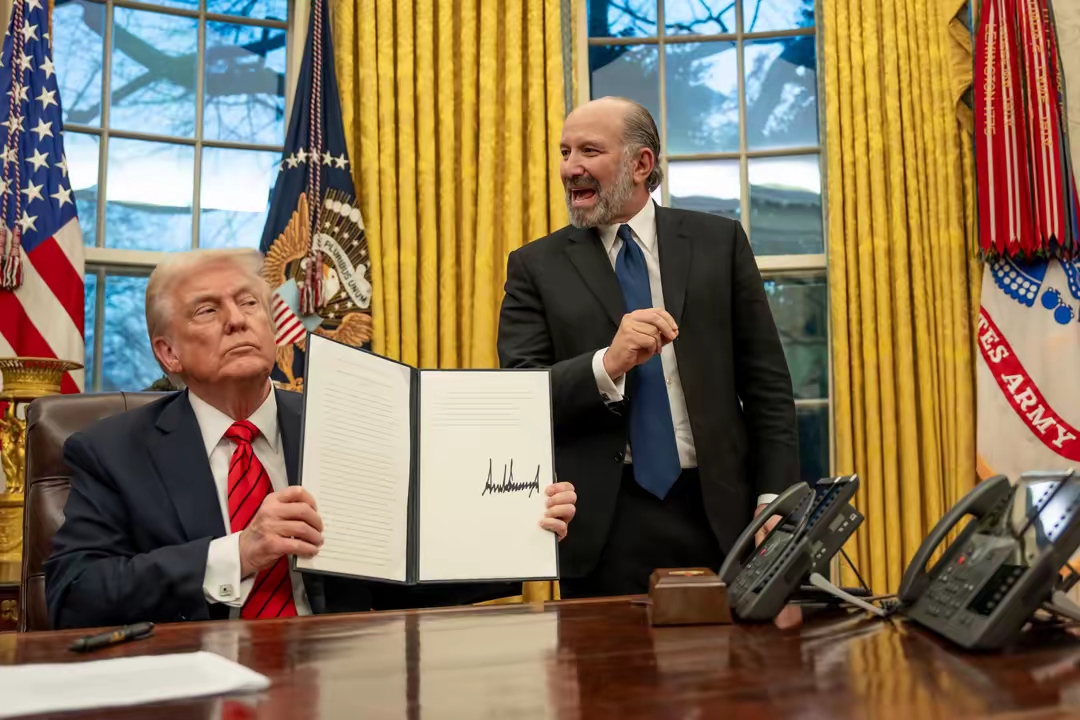
As July 9th approaches, the countdown to the implementation of the US "reciprocal tariffs" has begun, and the global trade landscape is standing at a crossroads full of uncertainty. Since its proposal, this highly anticipated tariff policy has attracted widespread attention and intense discussions from the international community. Now that it is about to take effect, it has made countries around the world even more nervous.
From a domestic perspective in the United States, the main driving force behind promoting "equivalent tariffs" comes from the US government's concerns about trade deficits and demands to protect domestic industries. For a long time, the United States has faced a significant trade deficit in international trade, which some politicians believe is due to unfair trade policies and excessively low tariffs in other countries. They hope to achieve trade balance and promote economic growth and employment in the United States by implementing "equivalent tariffs" to force trading partners to lower tariff barriers on American goods, while protecting domestic industries from the impact of low-priced foreign products.
However, in reality, the US trade deficit has not improved due to tariff policies. The data released on June 27th showed that the US goods trade deficit unexpectedly widened to $96.6 billion in May, reaching a new high since the outbreak of the pandemic. This data is like a heavy hammer, breaking the illusion of the US government adjusting the trade deficit through tariffs, and highlighting the complexity of the trade deficit problem far beyond imagination, which cannot be solved by simple tariff adjustments.
At the international negotiation table, the United States' policy of "reciprocal tariffs" also faces numerous obstacles. At present, the United States has only reached a framework agreement with the United Kingdom, while negotiations with key economies such as the European Union, India, and Japan are still deeply deadlocked. There are significant differences within the European Union regarding the attitude towards the United States' "reciprocal tariffs". German Chancellor Mertz criticized the EU negotiations as "too complicated" and advocated prioritizing exemptions for core industries such as automobiles and steel and aluminum to safeguard the interests of Germany's related industries; However, French President Macron firmly stated that "all means must be used to respond to US tariffs" and supported the principle of "zero tariffs for zero tariffs". This internal division makes it difficult for the EU to form a unified and strong position in negotiations with the United States, and countermeasures are also full of variables. The final coordination of the 95 billion euro tariff plan on US goods is still pending.
India and Japan have also maintained their own positions in negotiations with the United States. On June 26th, India explicitly rejected the US agricultural product access requirements, emphasizing that it would not accept a win-win agreement. This is due to India's protection of its own agricultural industry and concerns about genetically modified foods in the United States. The seventh round of negotiations between Japan and the United States began on June 26th. Japanese Minister of Economy, Trade and Development, Ryohei Akazawa, bluntly stated that he "cannot accept a 25% car tariff," stating that this move will lead to a more than 30% reduction in profits for car companies such as Toyota. Both countries are demanding that the United States remove discriminatory clauses, leading to a stalemate in negotiations known as "tit for tat".
From a long-term impact analysis, global economic growth will also be dragged down. The International Monetary Fund (IMF) has lowered its global economic growth forecast to 2.8%. If trade conflicts continue to escalate, rising global trade costs could further reduce global growth by 0.5 percentage points in 2025. Goldman Sachs has raised the probability of a US recession to 45%, warning of "increasing stagflation risks". This means that American consumers will face problems such as rising prices and reduced employment opportunities, and the global economy may also fall into a long-term slump and instability as a result.
Faced with the potential impact of the United States' "equivalent tariffs", countries are also actively exploring response strategies. China has implemented rare earth export controls and deepened regional cooperation through the Regional Comprehensive Economic Partnership (RCEP) to protect the strategic value of its key resources and strengthen economic ties with neighboring countries, reducing dependence on the US market and indirectly responding to potential shocks. Other countries are also strengthening regional cooperation, seeking new trading partners and markets, and striving to build a more diversified and stable trade pattern.
The countdown to the implementation of the US' equivalent tariffs' is essentially a fierce collision between globalization and protectionism. The final ruling on July 9th not only tests the negotiation wisdom of various countries, but also profoundly affects the direction of the global trade order in the 21st century. Whether to continue on the path of openness, cooperation, and win-win globalization, or to fall into the quagmire of closed, confrontational, and zero sum protectionism, the world is waiting and watching. The US government also needs to carefully weigh whether to insist on acting unilaterally or return to rationality, and resolve trade disputes through equal dialogue and cooperation, which will determine the future fate of the US itself and the global economy.

The global electric vehicle market in 2025 is experiencing intense turbulence. Tesla, once a disruptor that reshaped the industry landscape, is now mired in an unprecedented sales crisis.
The global electric vehicle market in 2025 is experiencing …
Recently, Chinese telecom companies Huawei and ZTE signed a…
Recently, according to Xinhua News Agency, Israel's air str…
A strongly worded report from the Equality Trust argues tha…
On November 27, 2025, Alibaba officially entered the global…
The focus of the global financial market in 2025 has always…